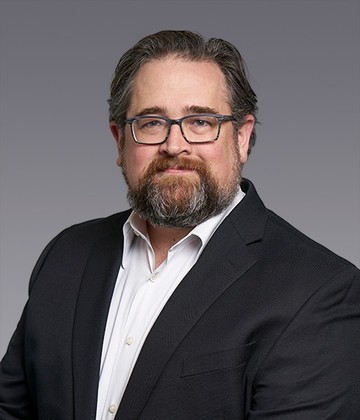|
Instructor

Aaron Weinstein
(LinkedIn)
Pricing:
Member $95
Nonmember $155
Purchase now
|
Scope and Principle of GMP Annex 1
A significant change in requirements, recommendations and detailed specifications are included in the GMP Annex 1 drafts. While the intent of Annex 1 is to provide guidance for the manufactures of sterile products; some of the principles and guidance such as a Contamination Control Strategy (CCS), facility design, cleanroom classification, qualification, monitoring, and personnel gowning may be used to support other medical product manufacturing. This session will include:
- Brief history of the document and the reasons behind the updates.
- Discussion regarding the scope and its extension into non-sterile manufacturing.
- Introduction to the various sections of the CCS
Why you should attend:
- Become familiarized with updated current regulatory thinking.
- Learn from case histories regarding international regulatory observations.
- Be prepared for future inspections, audits and regulatory expectations.
- Learn from industry experts who have the knowledge and experience in developing science and risk based contamination control strategies for all types of medicinal products.
Who should attend:
Information coming soon.
|
|
|
|
Instructor

Morgan Polen
(LinkedIn)
Pricing:
Member $225
Nonmember $285
Purchase now
|
Premises and Equipment of GMP Annex 1
Cleanrooms are high technology environments designed to control and limit airborne particles and other types of contamination. The International Organization for Standardization (ISO) has a series of standards for cleanrooms and contamination control. These standards are a baseline that is applicable for all industries. Cleanrooms used for medical products such as pharmaceuticals have additional requirements (beyond cleanrooms used in other industries) and regulations that apply to the design, construction, qualification, and operation. GMP Annex 1 introduces a grade system related to cleanroom occupancy states that utilizes the ISO 14644 series of standards but places particle and microbial limits assigned to each grade based upon the occupancy state of each grade. Additionally the qualification testing of cleanrooms in Annex 1 calls for very specific testing such as; installed filter leakage and integrity testing, airflow measurement - volume and velocity, air pressure difference measurement, airflow direction and visualization, microbial airborne and surface contamination, temperature measurement, relative humidity measurement, recovery testing, and containment leak testing. This session will include:
- Cleanroom concepts
- Cleanroom and barrier system integration
- Door openings and ingress of contamination
- Passthrough designs
- Airflow disruptions due to to inadequate cleanroom design
- Case studies and regulatory observations related to cleanroom flaws that have led to environmental monitoring excursions, media fill failures, product failures, regulatory observations, warning letters, import alerts and patient harm.
Why you should attend:
Current revision of GMP Annex 1 has greatly expanded the section of cleanrooms and clean air devices purporting contamination control from design phase. This scientific approach helps understand cleanroom design requirements that need to be addressed to meet the contamination control effect of cleanroom air. This module will provide guidance through real-time case studies and regulatory observations to bring home the importance of a good cleanroom design and airflows to protect product contamination and patient harm.
Who should attend:
Information coming soon.
|
|
|
| Supplemental Modules |
|
Instructor

Jim Polarine
(LinkedIn)
Pricing:
Member $95
Nonmember $155
Purchase now
|
Cleaning and Disinfection
This module provide a roadmap to the cleaning and disinfection process by covering current industry trends, global regulatory expectations, and essential elements needed to keep the cleanroom in a state of continuous control. The new Annex 1 related to cleaning and disinfection includes RABS cleaning, drain cleaning, pass thru decon, disinfectant rotation, and residue removal which will all be covered. Cleaning and disinfection are a critical component of a successful contamination control strategy. There will be an in-depth discussion on current industry regulations. Sanitizers, disinfectants and sterilant technologies, operator safety, and applications of these products will be discussed. Videos will be shown to cover the usage and effective application techniques with these products. Current industry trends in disinfectant rotation, biocidal sterility, application techniques, SOP development, and rinsing and residue removal will be discussed. Regulatory expectations of FDA, MHRA, ANVISA, ANMAT, HPRA, EMA, IFM, and ANSM inspectors will be discussed. The new Annex 1, USP 43 <1072>, PDA Technical Report #70, IEST-RP-CC-018.5, and other industry related guidance documents will be covered. The attendees will gain a stronger understanding of current industry trends regarding cleaning and disinfection best practices and how to design an effective risk-based contamination control strategy. Recent industry FDA Warning Letters, FDA 483’s, and case studies will be covered as teaching tools.
Why you should attend:
Information coming soon.
Who should attend:
- Validation Managers
- Quality Control Managers
- Quality Assurance Managers
- Lean Managers
- Operations Managers
- Cleanroom Managers
- Regulatory Affairs Managers
- Production Managers
- Quality Systems Managers
- Cleaning and Disinfection Manager
|
|
|
|
Instructor

Ziva Abraham
( LinkedIn)
Pricing:
Member $95
Nonmember $155
Purchase now
|
Personnel
This comprehensive module on “Personnel” has been developed to meet the requirements as highlighted in the revision of GMP Annex 1 as part of the Contamination Control Strategy.
- Overview of contamination generated or brought in by personnel into the cleanrooms.
- Guidance on development of gown choice and management program to ensure integrity of garments and protection of product.
- Goggle choice and management for controlling personnel borne contamination of open product.
- Importance of glove choice and gloving procedures as a part of CCS.
- Gowning procedures, best practices and common mistakes.
- Training, qualification and disqualification of personnel.
- Managing and analyzing personnel monitoring data.
- Using of airflow visualization as a pert of qualification and training of aseptic personnel as required per GMP Annex 1 and current regulatory thinking.
Why you should attend:
This module will provide practical guidance on the requirements for specific training, knowledge and skills as well as qualification of personnel per GMP Annex 1. There will be specific instructions provided for importance of gown management and examples as well as regulatory observations related to gowning deficiencies that have led to contamination of products will be presented.
Who should attend:
Information coming soon.
|
|
|
|
Instructor
Betty Howard
(LinkedIn)
Pricing
Member $95
Nonmember $155
Purchase now
|
Radiation Processes and Dose Settings
This module will cover the following:
- Overview of sterilization
- Traditional sterilization methods
- Dry Heat
- Moist Heat
- Radiation (Gamma E Beam and X Ray)
- EO (traditional and SEO)
It will also describe and compare the three Ionizing radiation processes (Gamma, E Beam and X-ray and includes how each is delivered, areas of use, benefits and limitations, availability and guidance in references and standards on validation of sterilization doses to make a claim for terminal product sterilization.
Defining and comparing Gamma, Electron Beam and X-ray irradiation will be discussed with this additional information:
- How they are produced
- Comparison of key function properties
- Benefits of Ionizing processes
- Reference and Guidance Standards that apply
- Dose setting Process for a Sterility Assurance Claim
- Considerations in deciding to use radiation processes
- Materials effects
- Validation time
- Maintaining a validation with audits
Why you should attend:
Information coming soon.
Who should attend:
- Product design and development scientists
- Quality assurance
- Microbiology testing and control
- Product validation specialists
- Materials selection engineers
- Process control and maintenance HealthCare or personal care products
- Bioburden reduction uses
|
|
|
|
Instructor

Ken Gordon
(LinkedIn)
Pricing:
Member $95
Nonmember $155
Purchase now
|
Ethylene Oxide Sterilization
This module will provide an understanding of ethylene oxide (EO) properties, use, and validation of an EO sterilization process. Relevant parts of the current draft 12 of Annex I will also be covered. Though often prescribed as a sterilization method of last resort, over half of all single-use medical devices globally are terminally sterilized with EO. This workshop will provide an understanding of: properties that impact the lethality of EO; equipment used to deliver, control, and monitor an EO sterilization process; and proper qualification (i.e., validation) considerations. Relevant industry guidance will also be discussed to provide an understanding of what is required (and recommended) to ensure compliance.
Why you should attend:
Information coming soon.
Who should attend:
- Validation Managers
- Quality Control Managers
- Quality Assurance Managers
- Lean Managers
- Operations Managers
- Regulatory Affairs Managers
- Production Managers
- Quality Systems Managers
- Process, Design, and Packaging Engineers
|
|
|
|
Instructor

Hasim Solmaz
(LinkedIn)
Pricing:
Member $95
Nonmember $155
Purchase now
|
Non-Viable Monitoring
Non-viable particle monitoring (AKA Total particulate or particle counting) based upon light scattering methods, is the principal test method for all cleanrooms, clean air devices, air filters and air quality assessment. International cleanroom standards require this testing as part of the qualification and monitoring of any cleanroom or controlled environment. International cleanroom standards ISO 14644 Parts 1 & 2 provide generic guidance that is applicable to all industries.
GMP Annex 1 current revision provides additional requirements for non-viable particle monitoring for both classification and monitoring. Non-viable particle monitoring requires a good understanding of particle sizes to be monitored, equipment choice, configurations, use, frequency of monitoring in various cleanroom zones, and interpretation of the data.This module will discussion the following:
- Standards and Guidance’s related to non-viable monitoring
- Continuous monitoring challenges
- Non-Viable particle counter performance specifications
- Calibrations Standards for Non-Viable Particle Counters
- What to look for when choosing equipment
- Common errors in equipment configuration and use
- Macro descriptor
- Monitoring for classification and qualification purposes
- What does the data tell you
Why you should attend:
Non-viable monitoring is the key test
Who should attend:
Information coming soon.
|
|
|
|
Instructor

Ziva Abraham
(LinkedIn)
Pricing:
Member $95
Nonmember $155
Purchase now
|
Viable Monitoring
This comprehensive module on “Viable Monitoring” has been developed to meet the requirements as highlighted in the revision of GMP Annex 1 as part of the Contamination Control Strategy.
- Choice of viable monitoring equipment.
- Media choice and management.
- Incubation time and temperature.
- Setting up alert and action levels.
- Frequency of monitoring.
- How to set up risk-based monitoring sites using airflow visualization per Annex 1 requirements.
- Viable monitoring for performance qualification and routine monitoring.
- Microbial identification; how and how much.
- Personnel monitoring.
- Monitoring of process gases.
- Development and review of EM trend reports.
Why you should attend:
This module will provide practical guidance on the requirements for viable monitoring including equipment, media incubation, risk based site selection, frequency of monitoring, identification and trending to meet the requirements put forth in EU Annex 1, 2020 Draft.
Who should attend:
Information coming soon.
|
Instructor

Jaime Kaho’ohanohano (LinkedIn)
Pricing:
IEST Members: $95
Non-member: $155
Purchase now
|
Quality Control
The quality control (QC) microbiology laboratory plays an essential role in pharmaceutical manufacturing and product release. It is responsible for multiple tasks, including: Environmental monitoring (sampling, bioburden counts, microbial identifications, and tracking and trending of data, and product release tests). Microbiology QC testing of the environment and products provide solutions to reduce microbial contamination, cross-contamination as well as detect contamination in products saving patients from harm.
FDA 483 observations and case studies will be used to explain the reasons behind testing errors and their impact on product and patient.
Why you should attend:
This session will provide practical guidance on the requirements for specific training, knowledge, and skills as well as qualification of personnel performing quality control testing. It will also discuss common mistakes made in the quality control laboratories that may lead to false negative of false positive results.
Who should attend:
Information coming soon.
|
|
|
|
Instructor
Details coming soon
Date(s):
Coming soon
Pricing:
Coming soon
|
Production and Specific Technologies: Part 1
Topics will include the following:
- Aseptic preparation and processing
- Finishing of sterile products
- Filter sterilization of products which cannot be sterilized in their final container
Why you should attend:
Information coming soon.
Who should attend:
Information coming soon.
|
|
|
|
Instructor
Details coming soon
Date(s):
Coming soon
Pricing:
Coming soon
|
Production and Specific Technologies: Part 2
Topic will include the following:
- Form-Fill-Seal
- Blow-Fill-Seal
- Lyophilization
- Closed systems
- Single use systems (SUS)
Why you should attend:
Information coming soon.
Who should attend:
Information coming soon.
|
|
|
|
Instructor

Hasim Solmaz
(LinkedIn)
Pricing:
IEST Members: $95
Non-member: $155
Purchase now
|
EU GMP Annex1 & Contamination Control Strategy: How to Prepare, Implement, and Maintain your CCS
One of the most important news in pharmaceutical industry for regulatory standpoint was New GMP Annex 1 revision in 2022. More than a revision, 99 new pharagraphs and several new definitions, new GMP Annex 1 become a completely new document for most of us. Contamination Control Strategy (CCS) is one of those new requirements. According to the GMP Annex1 2022; "A Contamination Control Strategy (CCS) should be implemented across the facility in order to define all critical control points and assess the effectiveness of all the controls (design, procedural, technical and organizational) and monitoring". Since this is a quite new concept, this webinar will summarize it with 3 easy and “self-explanatory” steps to make it easy to remember and implement “Contamination,Control & Strategy”
|